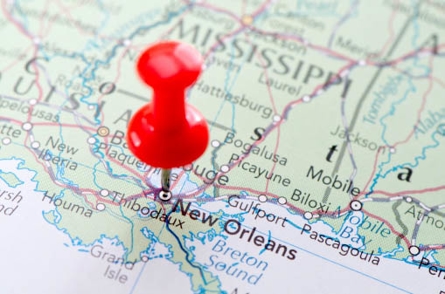
Natural disasters can and do happen. Across the United States, millions of people are impacted every year by natural disasters like floods, wildfires, tornados, hurricanes and earthquakes. Preparedness is the key to survival for any natural disaster. You can reference this National Disaster Risk Map from CrisisHQ.com to help determine your region's risk for various natural disasters. CrisisHQ’s map shows risk for floods, tornados, hurricanes and moderate and high-risk earthquakes, using data from the National Oceanic and Atmospheric Administration (NOAA) and the Red Cross. The United States Department of Agriculture (USDA) also offers a risk map for wildfires. ServiceMaster Restore® will always be there for you after a disaster, but we also want to help you be ready before disaster hits.
Areas Prone to Flooding
The central portion of the United States around the Mississippi and Missouri Rivers are prone to flooding as are coastal locations, due to their high risk of hurricanes. In the Midwest, the entire state of Iowa and most of Illinois and Missouri are high-risk regions for floods. Other states affected by floods include the eastern portion of Nebraska, all of Minnesota except the upper northeast region, the western half of Wisconsin and the eastern halves of both Dakotas.
In the southern states, most of Alabama is considered a flood risk as is western Georgia and the Houston area of Texas. Along the East coast, large portions of North Carolina, Virginia and Pennsylvania fall into the high-risk flood zone.
Learn if you live in a flood zone.
Regions at Risk for Wildfires
The year 2015 set a new record in the United States for wildfires, with more than 68,000 reported. The USDA offers a wildfire risk map that shows the western region of the United States has the highest risk for wildfires. However, areas of the eastern seaboard (including the southern tip of Florida) also are considered high risk. States that see the most wildfires include California, Nevada, Arizona, Colorado, New Mexico, Texas, Wyoming, Washington, Oklahoma, Montana, Idaho, Oregon and Utah.
States Affected By Tornados
Tornados have been documented in every state in the U.S. but "Tornado Alley" is considered the area with the highest risk for these devastating natural disasters. The states that comprise Tornado Alley include Kansas, Nebraska, South Dakota and Oklahoma as well as the northern parts of Texas, western portions of Iowa and the very southern region of Minnesota.
Southern California has a higher risk factor for tornados as well.
Areas Hit by Hurricanes
In the continental U.S., certain regions like the Gulf Coast, Atlantic Coast and Hawaiian islands have a higher risk of hurricanes than others. However, adjacent regions may still experience the impact of a hurricane event even if the hurricane doesn't hit directly. Areas most at risk for hurricanes include the southern Gulf Coast tip of Texas, most of Louisiana and all of the state of Florida. Within Florida, the cities of Tampa, Key West and Miami are where a hurricane is most likely to make landfall. Alabama and Georgia are also at risk. Along the eastern seaboard, the Cape Hatteras area of North Carolina has a high risk for hurricanes, while the entire East coast from South Carolina to Maine can experience the effects of a hurricane.
Regions at Risk for Earthquakes . . . Besides California
Earthquakes aren’t exclusive to California. While the Natural Disaster Risk Map reveals that high-risk regions include large portions of the Golden State, the entire western seaboard and western portions of Nevada are also at high risk for earthquakes. The regions at a moderate risk for earthquakes are more expansive and include most of the western states as well as a small portion of southwest Texas. The Midwest gets a moderate risk designation from portions of Missouri and Arkansas to all of Tennessee, while parts of Kentucky, Mississippi, Alabama, Georgia and South Carolina are also at risk. Maine, New Hampshire and Vermont also are considered moderate risk regions.
Use these maps to help determine your risk factor for any natural disaster event and prepare accordingly, be it tornado, flood, earthquake, wildfire, or hurricane. In the event that disaster does strike, ServiceMaster Restore® is there 24/7/365 to offer expert guidance, cleanup, and remediation services. Call us at 1-800-RESPOND.
